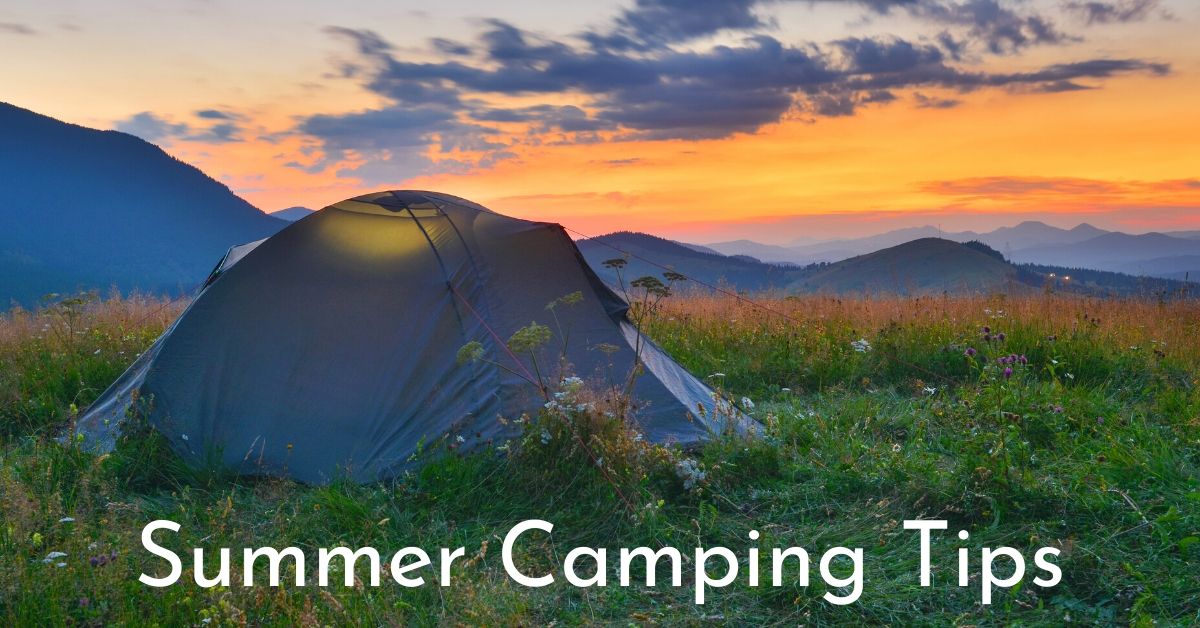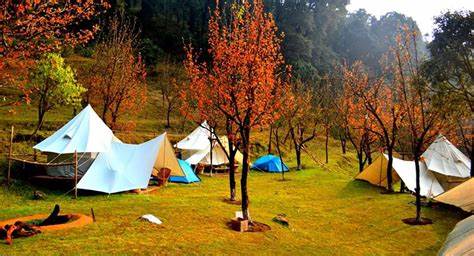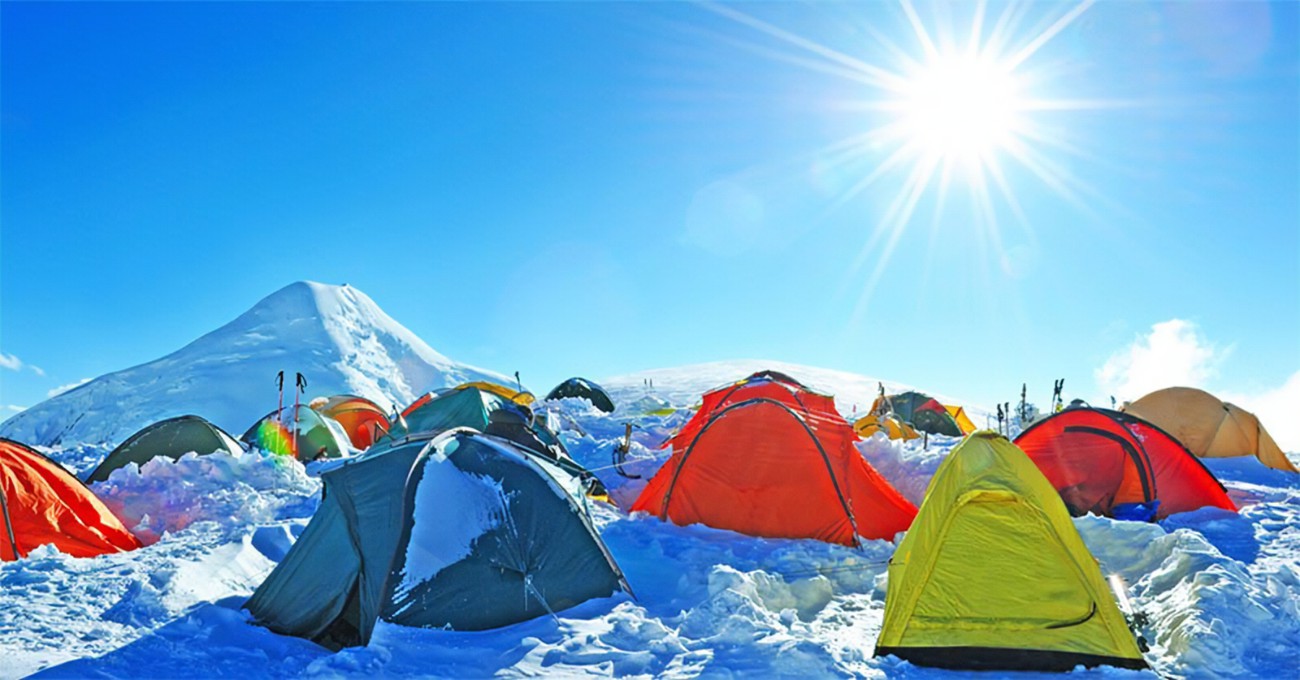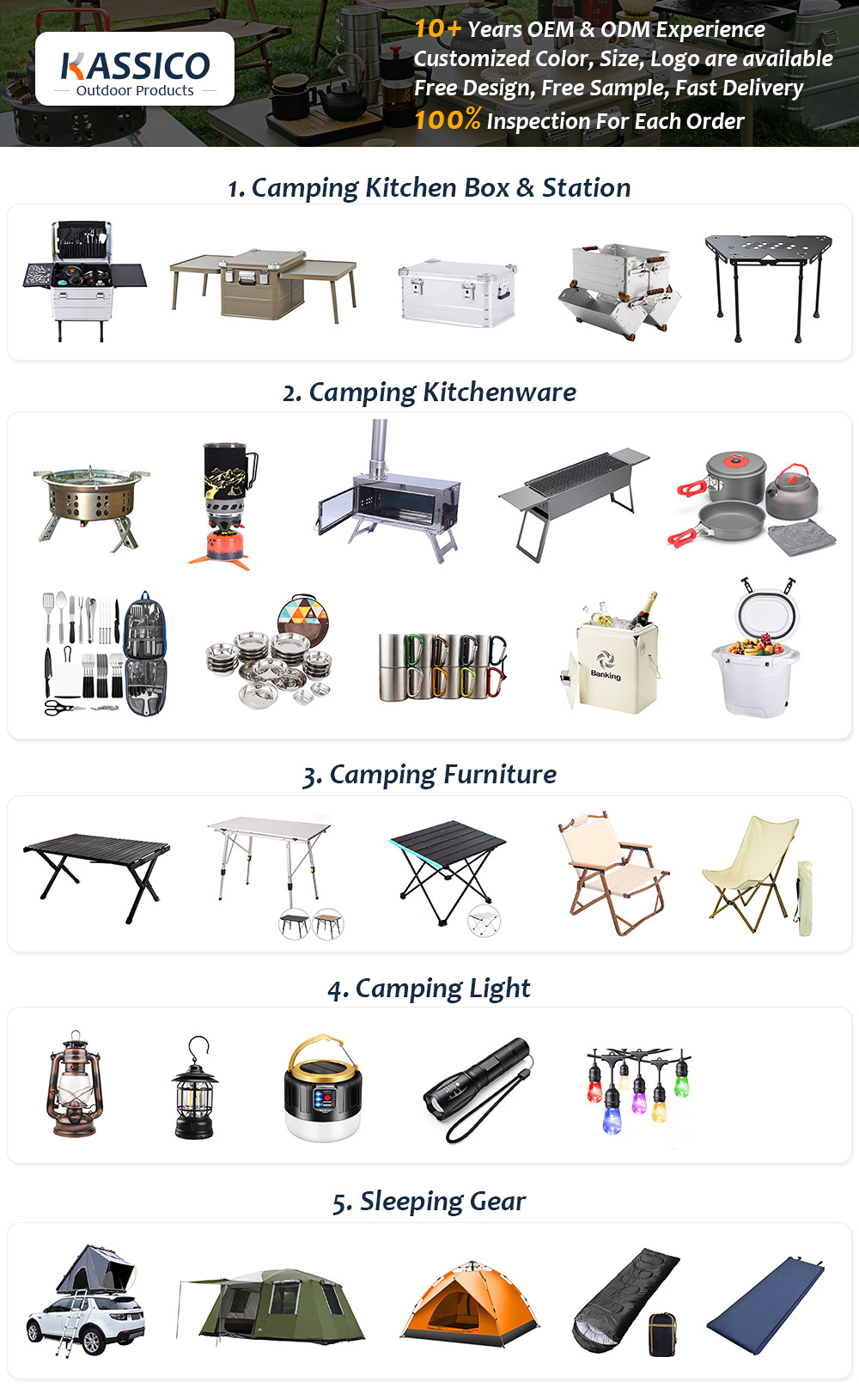Which season is the best for camping? Different seasons have different
outdoor camping fun.
1. Spring Festival
Camping Spring is a particularly suitable season for camping. Bring the whole family or a few friends to the countryside, feel the birds in the clear sky, listen to the sound of the stream, and look up at the twinkling stars. The joy of being integrated into nature makes you forget your stress and troubles.
2. Summer
Summer camping is most suitable for camping at the seaside, riverside, deep mountains, plateaus and other places. It is also an excellent opportunity to use the summer vacation for long-term camping. However, the most crowded camping areas and sightseeing spots are also during this period. Yodo camping life also requires planned preparations in advance, and don’t forget to bring long-sleeved skin clothes that resist UV rays and mosquitoes, and apply sunscreen.
3. Autumn
Since mid-September, when the heat gradually recedes, it is the most suitable autumn for camping. The maple leaves that gradually turn red in the mountains are very beautiful. However, after October, the sunshine time is shortened and the temperature gradually drops. You must pay more attention to keep warm. Don’t forget to bring A yodo shell or fleece jacket.
4. Winter
Camping on the snow, you can enjoy the clear air that is not available in other seasons, enjoy the snow-covered landscape, and feel the magnificent atmosphere. Many people may be afraid to act because of the cold, but in fact, bring a jacket, choose a suitable thermal sleeping bag, etc., and take complete measures to keep warm.
Camping in different seasons
1, spring camping attention
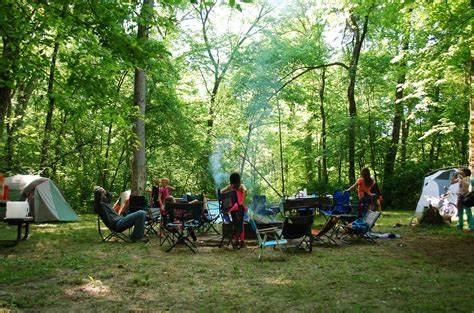
(1) The temperature in spring is unstable and the temperature difference is large. Therefore, it is necessary to carry clothes that are warm enough to prevent catching a cold.
(2) Choose a suitable location to camp: near water, leeward, far cliff, near village, shady, beast-proof, lightning-proof.
(3) Spring outings will encounter low temperature and rainy weather, dense fog, strong convective weather and thunder and lightning weather conditions, so pay attention to wearing appropriate clothes, not too much, not too little, remember to bring a warm jacket with you.
(4) Pay attention to hygiene when going out, and do not stay in crowded places. Choose a place with good air quality, such as hiking, or going to the seaside or forest.
(5) Rain gear is something that must be carried with you during the spring outing. It is best to bring a small folding umbrella or a disposable raincoat.
(6) Shoes must be comfortable, and women should not wear high heels when traveling. If your feet are red and swollen, soak your feet with hot water before going to bed to unclog the meridians.
(7) When you go out, remember to keep a booklet for yourself, which records some important contact numbers and other information, which will come in handy when you need help.
(8) As early spring approaches, rainfall is inevitable. When playing outside and encountering rainy days, pay attention to anti-skid, anti-fall and anti-fall when taking pictures, and put personal safety first.
(9) Spring is a humid season, and mosquitoes and bacteria are particularly easy to breed, so you should try to avoid drinking raw water and eating unsanitary food.
(10) If you have a history of motion sickness, seasickness, or airsickness, you should not eat too much before traveling. You should take medicines such as wave sickness tablets in advance, or keep chewing gum and food containing glucose, and choose some ventilated places to sit, such as If you feel uncomfortable, deal with it immediately.
(11) In view of the rainy season, please pay attention to your clothes before departure. Dress as far as possible in addition to keeping warm and take into account some waterproof and windproof effects, so that you can play without worries.
(12) People with a history of allergies should pay more attention to the chosen spring outing location. They should try to avoid places with flowers. They can also take anti-allergic drugs such as chlorpheniramine or anqimin beforehand to prevent pollen allergy.
(13) The spring is bright and the wind is sunny, which is a good time for outdoor photography. Before traveling abroad, it is best to check the performance of the camera, the battery should be fully charged, and do not let the camera get wet.
2, summer camping attention
(1) There are many strong convective weather in summer, and some mountainous areas have alpine microclimates. In addition, the upstream reservoirs may be waterproof and flood discharge. When camping in the canyons, you must choose a safe distance from the water. Camping rest is inseparable from water, and proximity to water is the first element of choosing a camp.
(2) When choosing a camp, you should choose a place close to streams and lakes to facilitate water collection. However, the camp cannot be set up on the river beach. Some rivers have power plants upstream. During the water storage period, the river beach is wide and the water flow is small. Once the water is released or it rains heavily, flooding may occur. When camping in some valleys and river beaches, it is especially important to choose a leeward place. It is easier and safer to use fire when the wind is leeward.
(3) If you need to live for more than two days, it is best to choose a shady place to camp, for example, under a big tree and on the north side of the mountain, it is best to shine in the sun instead of the sunset. This way, if you rest during the day, it won't be too stuffy in the tent. Level the ground.
(4) Before setting up the tent, the selected camp should be cleaned first, and all kinds of uneven, thorny, pointed objects such as stones and shrubs should be removed. The uneven places can be filled with soil or grass. In order to facilitate accommodation, dining and entertainment, the camp should also be divided into zones, such as tent camping area, fire area, water intake area, dining area, entertainment area, sanitary area, etc.
3. Attention to autumn camping
(1) If you want to succeed in the first autumn camping, planning the route is the most basic. Before departure, you can find an experienced teammate to go with you, or bring a navigation device to avoid getting lost.
(2) Autumn is not as long as summer, with shorter days and longer nights, so autumn camping needs to start early and arrive at the camp as soon as possible to avoid hurrying when it is dark.
(3) Bring enough clothes to keep warm, which is the top priority of autumn camping. When camping in summer, you can wear short sleeves and go out, and add a fleece when it's cold at night. This is not the case for autumn camping. You should include soft shells, fleece, cotton clothes, and even down jackets in the preparation range. There are enough warm clothes in the bag, so that you can have confidence in autumn camping.
4, winter camping attention
(1) It is important to keep clothing dry, especially gloves and socks.
(2) It is best to dry the night clothes with fire or put them in a sleeping bag, and use the body temperature to dry them while sleeping.
(3) It is best to put the shoes in the sleeping bag. If you put the shoes outside the sleeping bag, they will be frozen hard the next morning, which is not only difficult to wear, but also wears your feet.
(4) Do not wear shoes to bake your feet, which will not only be difficult to dry, but will also cause water vapor in the shoes. When you go out, walking in ice and snow will condense into ice, which is prone to frostbite.
(5) Put a plastic bag on the outside of the socks and then put on the shoes to keep the feet warm and damp.
(6) Take the military kettle filled with hot water, remove the insulation cover, and hold it in your arms, which can not only keep warm, but also wash your face the next day.
(7) A small amount of quicklime can be crushed and put into a bottle, thick plastic bag or a kettle, add some water, seal it and put it in the quilt, it can generate heat after 10-20 minutes, and can be kept for 4-5 hours. higher temperature.
(8) Fleece material with good thermal insulation performance can be selected for the middle layer, because fleece itself does not absorb water, has good perspiration effect, and can fix a certain amount of air, which has a good thermal insulation effect. Delicate and thick, so the thermal insulation effect will be much better.
(9) The innermost layer is of course the perspiration layer. It is best to choose perspiration underwear. If there is no perspiration underwear, you can also choose quick-drying, but you must not wear cotton underwear, otherwise it will be very comfortable when walking. will be very cold.
(10) If there is no sleeping bag, you can fold the blanket into the form of a sleeping bag. The method is: fold the blanket in half, the upper part is longer than the lower part, and the longer part is stacked under the body, and then the blanket at the foot is folded under the blanket, This keeps you warm like a sleeping bag.
(11) Snow camping sleeping bags cannot be placed directly on the ground with snow and ice, but pine branches and coats can be placed under the sleeping bags to prevent the human body from melting the ice and snow and chilling.
(12) It should be fully fluffy before using the sleeping bag, so that the thermal insulation effect is better. Sleeping bags must always be kept dry and should be dried on sunny days. After each use, let the warm air out of the bag to prevent the warm air from condensing and wetting the sleeping bag when it is cold.
(13) Do not wear too much clothes when entering the sleeping bag. Wearing too much will make people sweat, which will make the sleeping bag wet and reduce the thermal insulation performance.
(14) Pay attention to weather changes, don’t worry about changing or abandoning plans. In severe cold, high mountains or predictable bad weather, it is best to go out with more than four people, so that when emergency needs rescue, no one will be alone. action.
(15) To prevent snow blindness, if you do not have snow goggles or sunglasses, you can temporarily dig two long and narrow slits in a small piece of cardboard, thin wood, leather or cloth to cover the eyes for protection.
(16) If you feel cold when you wake up in the morning or before going to bed at night, you can do some exercises in your sleeping bag (sit-ups, squeeze your buttocks, massage your hands and legs, etc.) and drink some hot drinks, so as to maintain your body temperature.
(17) Wear a hat and gloves, most of the body heat is dissipated through the head, while maintaining the temperature and flexibility of the fingers is quite important. Don't wear socks, your toes need to be moved to keep warm.
(18) Wear several layers of faux fur or pure wool fabrics. Cotton fabrics are deadly, and if you're wearing cotton and you start to get chills, it's best to take it off and put on a non-cotton underwear or jacket. Because cotton fabrics lose their thermal insulation properties once they get wet and are difficult to dry.
(19) If there is a few hours of fine weather, you can put the snow into a black garbage bag, tie the bag, and expose it to the sun until the snow melts. The snow melted by this method is best used to cook food, and if you drink it directly, it will have a slight plastic smell.
(20) Put drinking water in your sleeping bag when you go to bed, so you won't have to worry about holding a frozen water bottle when you get up thirsty the next morning.
(21) Due to the need to supplement physical strength, backpackers need to carry heavier supplies in winter, about one kilogram per person per day, and preferably fast food. Because winter requires more fuel and is inconvenient to operate with gloves, the less steps and time it takes to cook, the better. Instant soups are a must, not only to warm the body, but also to prevent loss of heat and dehydration.
(22) High-calorie foods containing fat should be selected for lunch. Peanut products, canned fish, etc. are fine, but they are easy to freeze. Defrost food in a close-fitting pocket an hour before lunch.
KASSICO, a leading sheet metal fabrication factory with plant area of 15,000 square meters in Ningbo, China since 2001, specializing in metal camping products with complete production in mold design, laser cutting, stamping, bending, powder coating and assembly. We provide a wide range of
aluminum boxes, aluminum tables & chairs, and other metal camping products for customers all over the world. Since 2015, we expanded our capabilities by adding a sewing factory for
outdoor tent, also, we expanded trade business to other camping gear and outdoor equipment. KASSICO is committed to providing one-stop OEM & ODM services. With multiple sets of outdoor product solutions, we provide customers with hundreds of innovative and affordable outdoor products.
More Details: https://www.kassico-outdoor.com/

